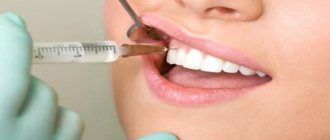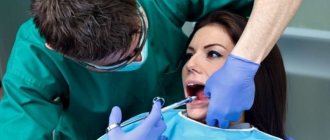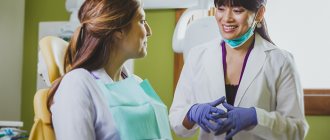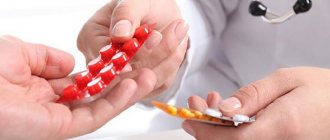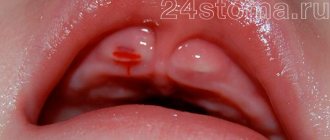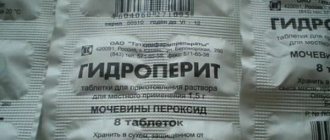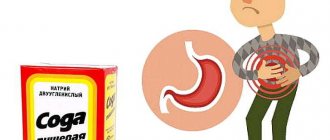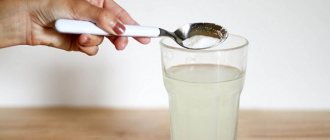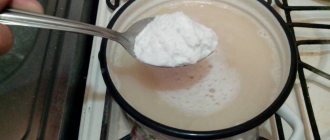We are publishing an article by Natalya Lvovna Mayorova, a dentist, therapist, and head of the therapeutic department of the Dentalika clinic.
Pain relievers used in modern dental practice can work wonders. After receiving an anesthetic injection, the patient does not feel any pain or even particularly unpleasant sensations. To ensure that the injection itself is painless, before the procedure the doctor “freezes” the injection site with a special preparation with a delicious smell of cherry, lemon, or apple.
Local anesthesia is the main method of pain relief used in dental practice. With local anesthesia, the patient remains fully conscious, and this allows the doctor to fully control the entire course of treatment, communicate with the patient, and monitor your reaction.
The quality of dental interventions depends on the results the doctor obtained during local anesthesia. Therefore, achieving 100% pain relief is necessary not only for the patient, but also for the doctor, in order to carry out treatment calmly, slowly, and efficiently. Hence the following requirements for local anesthetics:
- they must have a strong analgesic effect, easily penetrate into tissues and remain there for as long as possible;
- have low toxicity, causing a minimum number of both general and local complications
Based on these wishes, we chose several widely used drugs:
- Ultracaine DS forte (4% articaine, adrenaline 1:100,000);
- Ultracaine DS (4% articaine, adrenaline 1:200,000);
- Scandonest SVC (3% mepivacaine; without vasoconstrictors - adrenaline).
Now in more detail about their action.
Ultracain DS
The analgesic basis of the first two drugs is ARTICAINE (amide anesthetic from the thiophene series), an antispasmodic - lowers blood pressure. It is characterized by rapid action - anesthesia occurs in 0.5-3 minutes. Articaine is 2 times stronger than lidocaine and 6 times stronger than novocaine (anesthetics of previous generations), less toxic, relatively quickly eliminated from the body. Its half-life is, on average, 22 minutes, that is, all traces of the drug disintegrate in 44 minutes and are then completely eliminated from the body. Has high penetrating ability. It is distinguished by high purity of the solution. Allergic reactions to articaine are very rare - one in one hundred thousand injections ; the use of articaine, according to studies, is safe in 99.4% of cases. They also contain a vasoconstrictor (a substance that causes constriction of blood vessels and a decrease in blood flow in them) - adrenaline. The use of a vasoconstrictor continues and enhances anesthesia. The drug also contains antioxidants (sulfites) - substances that prevent the oxidation of adrenaline.
Ultracaine does NOT contain parabens (anesthetic preservatives), which significantly reduces its toxicity. In addition, parabens can cause allergic reactions.
Thus, ultracaine is:
- a strong anesthetic with moderately low toxicity, due to its components;
- the safest drug for pregnant women, because articaine does not penetrate the hematoplacental barrier - the barrier separating the blood of the fetus and the blood of the mother (Ultracaine DS).
School-age children can also use Ultracain DS. We always remember that the administration of an anesthetic solution with adrenaline is CONTRAINDICATED for children under 5 years of age, patients with pathologies of the cardiovascular system, with endocrine pathologies, taking antidepressants, thyroid hormones, drugs that block beta adrenergic receptors; - an anesthetic that practically does not require postoperative pain relief;
- a drug that provides a rapid onset of anesthesia, depending on the anesthesia tactics chosen by the doctor, the effect occurs within 30 seconds to 3-5 minutes);
The duration of anesthesia is, depending on the technique chosen by the doctor, from 1.5-2 hours to 5-6 hours. The choice of different techniques (infiltration, conduction anesthesia) depends on the planned dental procedure. For example, there is a difference between the treatment of caries of one tooth and the complex removal of a wisdom tooth. - good local and general tolerability. According to studies, only 4.3% of patients experienced toxic reactions, which was caused by the presence of adrenaline and sodium disulfate in the anesthetic solution.
- For standard procedures, a small amount of anesthetic is required (0.9 ml-1.8 ml).
I would like to note that for standard dental operations it is better to use Ultracain DS (adrenaline 1:200,000). A strong anesthetic provides high-quality anesthesia even during complex, long-term interventions, and a small amount of vasoconstrictor ensures low toxicity of the anesthetic solution. And we prefer to consider Ultracaine DS forte (adrenaline 1:100,000) as a “reserve anesthetic” in more complex situations:
- anesthesia of the lower lateral teeth (molars) for their treatment and depulpation;
- pain relief for inflammatory processes in the maxillofacial area (periostitis, osteomyelitis);
- for particularly traumatic interventions;
- in patients with a low pain threshold.
Features of dental treatment during pregnancy
Pregnancy is not a contraindication to dental procedures. However, it is important to take into account both the duration of pregnancy and the characteristics of its course, as well as the general health of the woman. There are several treatment features:
- Caries, pulpitis, periodontitis, inflammatory diseases of the gums and soft tissues: stomatitis, gingivitis, periodontitis, glossitis, cheilitis are subject to urgent treatment. Urgent care is also indicated for injuries such as tooth root fractures, chips, cracks, and the need for surgical intervention for abscesses, periostitis, etc. In some cases, orthodontic and orthopedic treatment, as well as whitening, can be postponed. For example, the installation of braces or one tooth implant can be postponed to a more favorable time, after the birth of the baby. In the absence of a large number of teeth, you can resort to removable dentures; they do not require preparation in the form of tooth preparation and other difficulties.
- When filling, the doctor can use any materials according to indications. The lamps used for curing are not harmful to the fetus.
- Dental treatment during pregnancy can be accompanied by high-quality pain relief. The expectant mother should not endure unpleasant sensations; there are drugs approved for use. The only limitation is anesthesia.
Ask a Question
Scandonest SVC
If the patient belongs to a risk group (with severe concomitant diseases , in particular cardiovascular pathology ), the use of an anesthetic solution with adrenaline, a vasoconstrictor, should be completely abandoned. In such cases we use Scandonest SVC . This anesthetic exhibits a vasoconstrictor effect, i.e. has vasoconstrictor properties and can therefore be used without adrenaline, which means that the drug does not contain sulfites and can also be used in patients with bronchial asthma and allergic conditions (after an allergy test). Scandonest SVC is a medium-strength anesthetic; provides anesthesia, depending on which part of the jaw the doctor disconnects from pain sensitivity, for 20 - 90 minutes, which sets it apart from the group of other non-adrenaline anesthetics.
Basic principles
The main principle that guides the attending physician is to determine the optimal interval between feeding and removal of the anesthetic from the mother’s body.
The half-life of a modern anesthetic is at least 20 minutes. After two hours, the concentration of the drug in the body is no more than 1-2%, the risk of exposure to the child is minimized.
It happens that a tooth needs not only to be treated, but to be removed. If you have inflammatory diseases such as tonsillitis, stomatitis, oral candidiasis, gingivitis, colds, flu, tooth extraction is contraindicated!
Before removal, the following procedures must be carried out:
- the doctor collects anamnesis;
- takes x-rays;
- identifies contraindications;
- collects tests.
After removal, the doctor will tell you how long not to feed the child. The hole will hurt on the first day; you can take painkillers, but only after the recommendation of a doctor. If the removal is accompanied by a purulent process, the doctor will prescribe antibiotics, and the doctor will decide whether breastfeeding can be continued or should be interrupted .
If treatment with painkillers is safe, then bleaching is not such a harmless method. Whitening is more of a cosmetic than a medical procedure, but many mothers wonder whether it is safe to do it during lactation. The procedure is harmful not so much because of the drugs used for whitening, but because the teeth are already weakened during this period.
After bleaching, it takes time to restore the enamel, and since insufficient amounts of calcium enter the mother’s body during breastfeeding, the process may be delayed. The whitening procedure during this period can harm the teeth and lead to caries.
Impact of X-rays on lactation
If the doctor ordered an x-ray, then do not be alarmed:
- During the procedure, only the jaw and a little face are irradiated;
- protective elements are put on the chest that do not allow rays to pass through;
- The radiation dose is too small to affect the body as a whole and the quality of milk in particular.
Allergy tests
If you have previously experienced allergic reactions to medications, you have doubts, and you do not fully know which local anesthetics are safe for you, we strongly recommend that you undergo tests for allergic reactions at an allergy center before visiting the dentist. The addresses of such centers can be obtained from the reception of the Dentalika dental clinic. The test results can be completely trusted. This recommendation especially applies to parents of children who bring their children to the dentist for the first time. Unfortunately, from year to year the number of children susceptible to allergic reactions in our city is only growing. A visit to the allergy center will completely protect your child from possible complications.
Contraindications and restrictions
A contraindication to any dental interventions may be the threat of miscarriage or premature birth. Of course, if a woman is in a hospital and undergoing treatment to maintain pregnancy, problems with the oral cavity may recede into the background. But if the condition allows you to visit the dentist, it is better to do so and discuss the advisability of treatment.
Some procedures will have to be postponed until after pregnancy:
- Implantation: the surgical stage may be contraindicated due to the use of medications during the recovery period and the need for several x-rays. However, in some cases, for example, when installing a permanent prosthesis on already engrafted implants, the procedure is allowed in consultation with the gynecologist managing the pregnancy.
Implantation requires serious preparation. During pregnancy, all the body's forces are aimed at the development of the baby. The work of the immune forces, the characteristics of the blood supply to organs and tissues, and metabolic processes change. This can lead to unpredictable results from the implantation of the artificial root. In addition, the recovery period after installation may include taking medications that are contraindicated when carrying a child.
- Professional whitening: Pregnancy is a contraindication to whitening, since tooth enamel may be weakened due to pregnancy and the result is more difficult to predict.
- Installation of fixed dentures: in the absence of a large number of teeth, it is better to prefer removable dentures; it involves a smaller volume of interventions.
In all cases where tooth extraction can be postponed, this must be done. We are talking about the removal of impacted, dystopic teeth that do not cause severe pain and do not carry the risk of serious consequences in the near future. If the tooth cannot be restored and causes severe pain, or is a potentially dangerous source of infection, removal is recommended.
Antibacterial therapy, as well as x-rays, are undesirable during pregnancy, but they can be prescribed by a doctor if there are strict indications. When taking x-rays, it is important to protect the abdominal area with a lead apron. The specialist selects antibiotics taking into account the duration of pregnancy, carefully weighing the potential danger in the absence of treatment and possible harm to the fetus. There are antibacterial agents that are approved during pregnancy and do not have a teratogenic effect.
Children
It should be noted separately the features of local anesthesia in children. The technique of local anesthesia in children must be planned so that 100% pain relief is achieved at all stages of treatment, otherwise it will be impossible to carry out the necessary manipulations.
As mentioned above, children under 5 years of age are given an anesthetic without adrenaline (3% scandonest SVC, or septanest 4% SVC).
Children over 5 years old can use an anesthetic with low concentration adrenaline (1:200,000 - Ultracaine DS). The dose of drugs is selected depending on age. Pain relief is performed in children in 3 stages:
- First, a superficial anesthetic gel is applied
- then a small dose (0.1-0.2 ml) of anesthetic is administered;
- after which, after 60-90 seconds (time sufficient for effective anesthesia of the needle path in the soft tissues), the remaining amount of the planned dose of anesthetic is administered.
We wait 5-10 minutes until complete anesthesia occurs. The child, feeling a complete absence of pain, gains confidence in the doctor and gives the opportunity to carry out the necessary intervention.
Indications for tooth extraction during lactation
During the procedure, drugs are used that can penetrate into mother's milk. If it is possible to postpone the date of the operation, then extirpation is carried out after the child is transferred to artificial nutrition. A dental unit is removed urgently during a purulent inflammatory process, as it contributes to the spread of infection throughout the body.
In what cases is surgery necessary:
- suppuration of a cyst, abscess, periostitis;
- unsteadiness due to periodontitis, periodontal disease of the third, fourth degree;
- odontogenic osteomyelitis, sinusitis, phlegmon;
- tooth root fracture;
- pulpitis, which cannot be cured due to the complexity of the canals;
- impacted figure eight, complicated growth of the third molar, pressure on neighboring teeth;
- deep caries that affected the root.
Unscheduled extraction is also performed in cases of severe, persistent pain.
The procedure has contraindications, including acute respiratory infections, chronic diseases in the acute stage, oral infections, sinusitis, severe pathologies of the liver, kidneys, heart, blood vessels, leukemia, bleeding disorders, and mental disorders.
Failed anesthesia
I would also like to touch upon the topic of unsuccessful local anesthesia. Almost every dentist has encountered this in their practice. The reasons for this phenomenon can be classified into 2 groups:
- depending on the doctor (poor choice of anesthesia technique and anesthetic solution; errors in the technique);
- depending on the anatomical and psychological characteristics of the patient.
To eliminate psychological causes in patients with a labile psyche (with increased emotionality, sensitivity, excitability), premedication is used: sedatives and sedatives.
In all other cases, the doctor must approach the choice of anesthetic and local anesthesia technique with even greater responsibility and professionalism, starting from the very first minutes of communication with the patient (history collection).
You should always remember that there are NO teeth that cannot be anesthetized, it’s just sometimes more difficult to achieve this.
High-quality pain relief minimizes patient discomfort and allows dentists to perform the necessary interventions.
Natalya Lvovna Mayorova doctor - therapist - dentist October 2009
Dear Colleagues! When copying information, placing a link to the source site is mandatory.
Causes of dental diseases
Tooth enamel is one of the strongest materials in the human body, but under the influence of various factors, even it begins to break down. The main cause of dental disease is the activity of bacteria that cause caries. They absorb carbohydrates and in return release lactic acid, which destroys teeth. A “hole” in a tooth is formed when, in a small space of the tooth, food that has entered there is processed by many bacteria, thereby releasing a large amount of acid.
This is not the only cause of dental disease. The causes are divided into congenital and acquired. In the first case, we are talking about teeth that have not yet grown. If the child’s mother suffered a serious illness during pregnancy or received insufficient nutrition, then the child’s teeth will be weak and susceptible to disease. Heredity can also be included in this category.
In the second case, we are talking about factors affecting dental health, such as:
- absorption of excess fluoride;
- mechanical damage;
- insufficient oral care;
- taking medications;
- lack of calcium or vitamin D.
The process of tooth extraction in a nursing mother
The procedure for a woman during lactation is no different from that performed for ordinary patients.
Extirpation of a dental unit is carried out in stages:
- antiseptic treatment of mucous membranes;
- anesthesia with local antiseptics or general anesthesia;
- applying forceps and disconnecting the ligament;
- rocking or dislocation;
- extraction from the hole;
- stop bleeding.
If the third molar from below is removed, the operation becomes more complicated. In order to pull it out, the doctor cuts the gum, removes part of the bone, divides the roots into fragments and removes them separately. To prevent infection, the wound is treated with antibacterial drugs. After all manipulations, the gums are sutured with absorbable or non-absorbable suture material.
